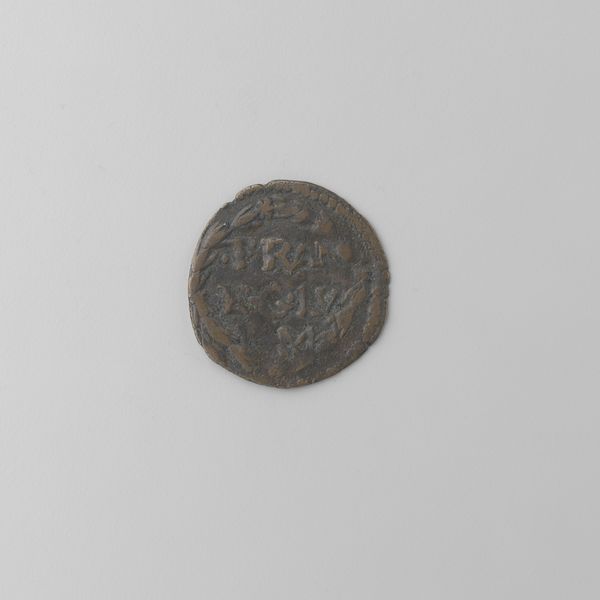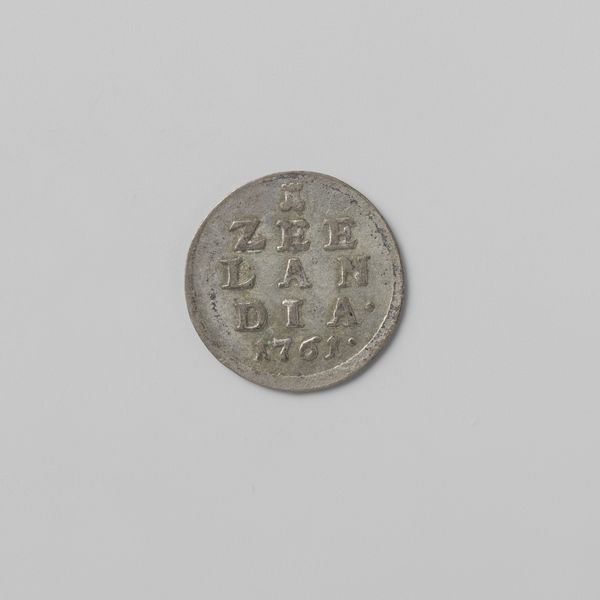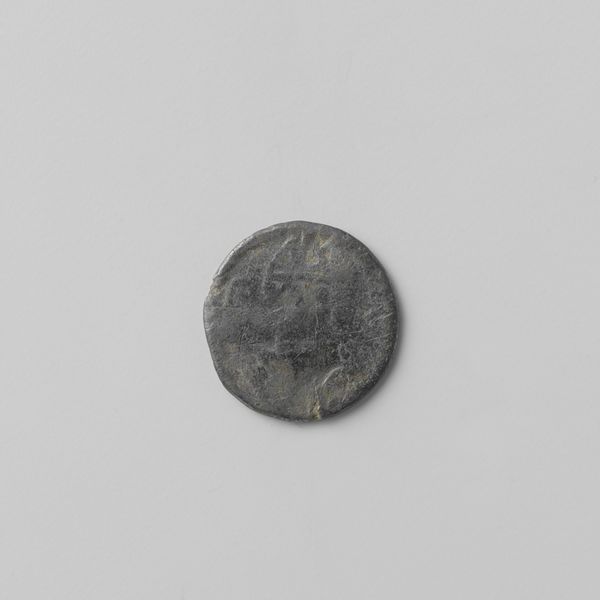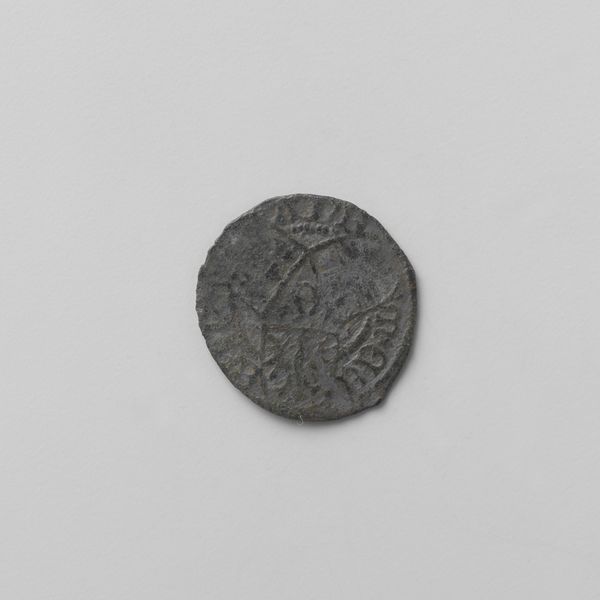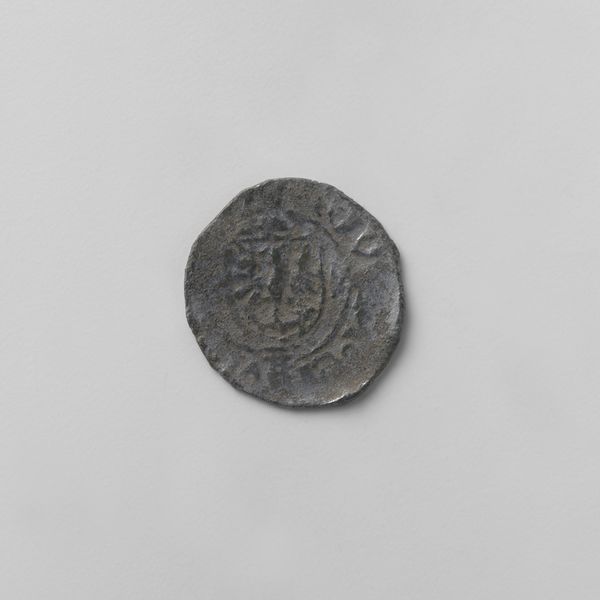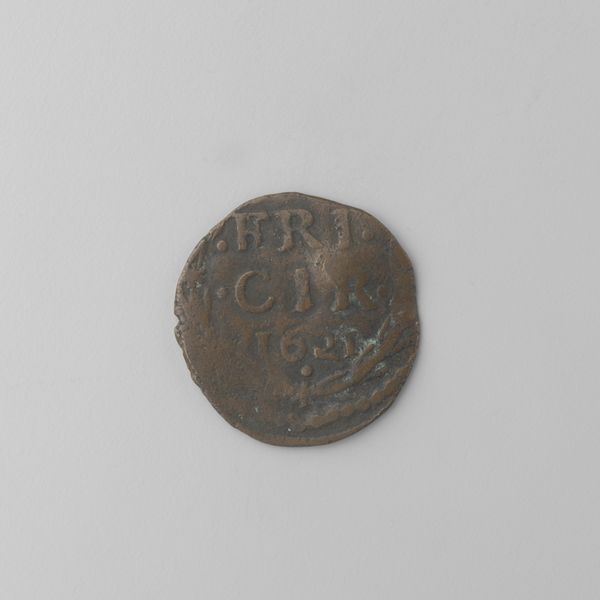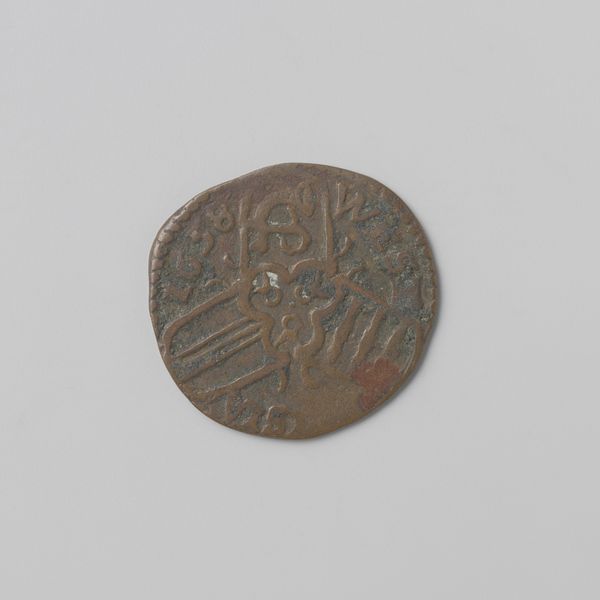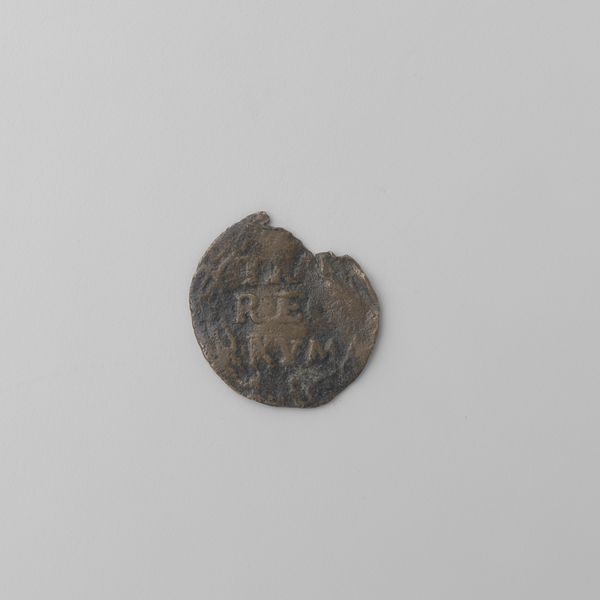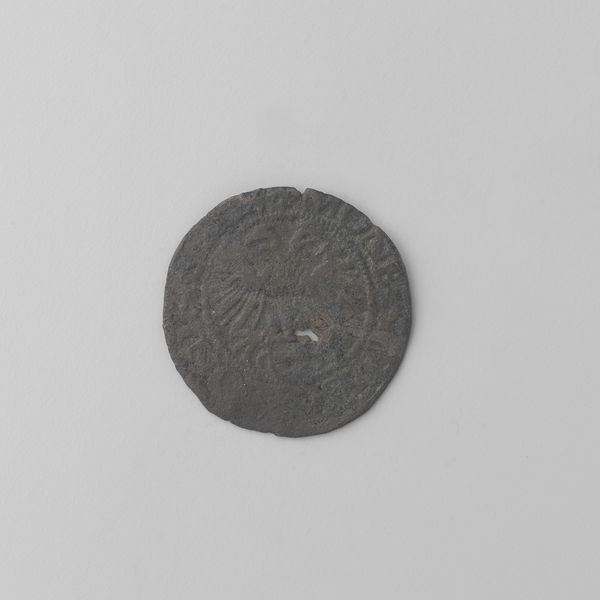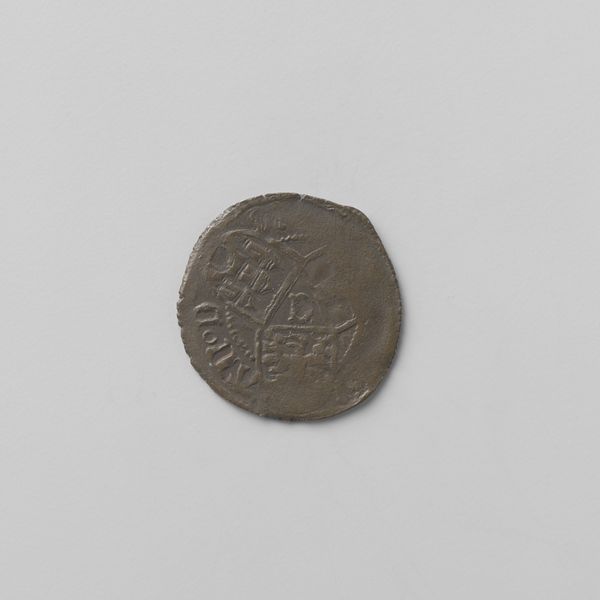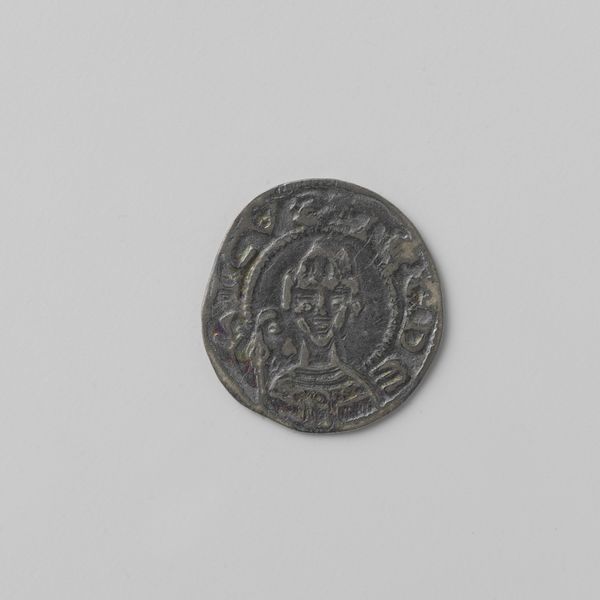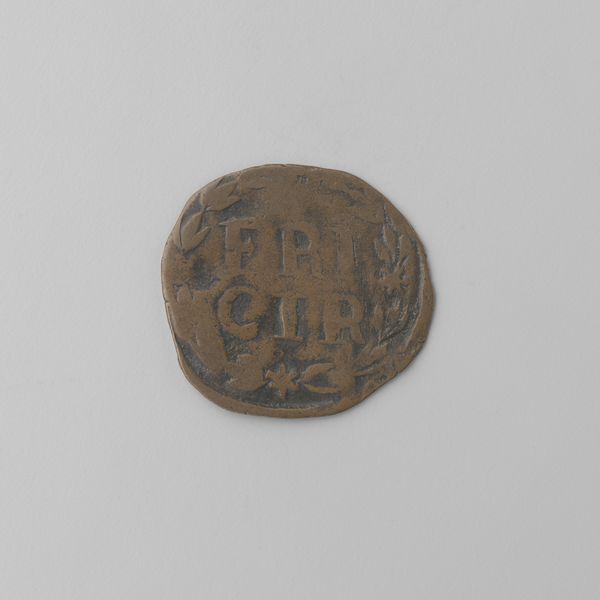
print, metal, photography
#
portrait
#
still-life-photography
# print
#
metal
#
photography
#
geometric
Dimensions: diameter 1.5 cm, weight 1.40 gr
Copyright: Rijks Museum: Open Domain
Editor: Here we have a photographic print of a Dutch 10 cent coin from 1885. The silver is incredibly tarnished; it almost feels like a ghostly relic of a bygone era. What strikes you most about it? Curator: It's fascinating how a common object like this coin transcends its monetary value through its depiction and preservation. It invites us to consider the relationship between economics, national identity, and visual representation in the late 19th century. The photograph is as much about the coin as it is about power and propaganda. Do you see echoes of Willem III’s profile even without it being directly represented here? Editor: I do now! The coin subtly alludes to his reign. This makes me think, how accessible would a photograph like this have been at the time versus the coin itself? Was the photograph meant for general circulation, or perhaps for a more specific, elite audience? Curator: That’s an insightful question. Photographs like this, circulated widely through publications or displayed in public institutions, played a crucial role in shaping perceptions of the monarchy. They became a form of currency themselves, not in monetary terms but in terms of social and political influence. And consider how still-life photography in this period also spoke to broader concerns about realism and documentation in a rapidly changing world. Editor: It's amazing how a simple photograph of a coin can tell such a layered story. It’s not just about the king, but about society, politics, and even the very idea of representation! Curator: Exactly. This coin becomes a lens through which we can examine the cultural and historical forces at play during Willem III’s reign and beyond.
Comments
No comments
Be the first to comment and join the conversation on the ultimate creative platform.

